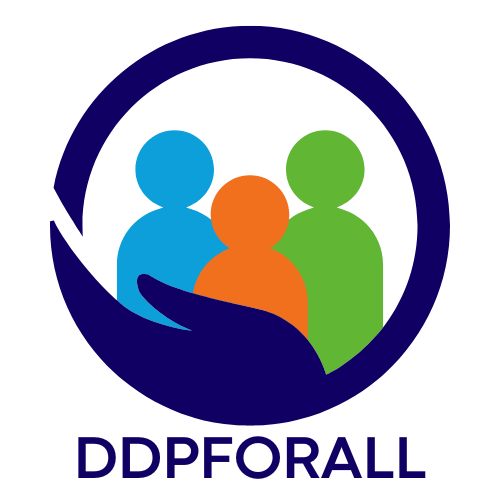Table of Contents
ToggleReading is the gateway to knowledge, yet for many students, that door feels locked. Imagine trying to navigate a maze blindfolded—frustrating, right? For those who struggle with reading, this is their daily reality. The primary area of difficulty isn’t just about sounding out words; it’s about grasping meaning and context. Without these skills, students can feel as lost as a cat in a dog park.
When students fall behind in reading development, they often grapple with comprehension. It’s like trying to solve a puzzle with missing pieces. They might decode words but miss the bigger picture. This gap can lead to a snowball effect, impacting their confidence and motivation. Understanding these challenges is crucial for educators and parents alike. After all, who wouldn’t want to see their child thrive in a world filled with stories waiting to be explored?
Understanding Reading Development
Reading development encompasses several key components, including phonemic awareness, vocabulary, fluency, and comprehension. Phonemic awareness refers to the ability to recognize and manipulate sounds in words. This skill lays the foundation for decoding words, which is essential for proficient reading.
Vocabulary plays a crucial role in understanding text. A broad vocabulary enables students to grasp the meaning of words and sentences, enhancing their overall comprehension. Without sufficient vocabulary, students may struggle to make sense of what they’re reading, leading to frustration and disengagement.
Fluency involves reading with speed, accuracy, and proper expression. Fluent readers can focus on comprehension rather than decoding individual words. Students who lack fluency often read slowly, which hinders their ability to understand larger passages and connect ideas throughout a text.
Comprehension is the ultimate goal of reading development. It requires synthesizing information, connecting context, and interpreting meanings. Students who experience challenges in comprehension fail to engage fully with texts, resulting in gaps in knowledge and reduced motivation to read.
Identifying difficulties in any of these areas is crucial for supporting students. Educators and parents must collaborate to provide targeted interventions that address specific needs. Offering strategies such as guided reading, vocabulary-building activities, and comprehension exercises can significantly improve student outcomes.
Encouragement and support are essential as students navigate their reading journeys. Creating a positive environment fosters confidence and motivation, helping students to overcome their challenges and achieve greater success in reading development.
Common Challenges in Reading Development

Struggles in reading development manifest in various ways. Addressing these challenges helps enhance students’ reading skills effectively.
Phonemic Awareness Issues
Phonemic awareness forms the foundation of reading. Some students may not recognize individual sounds in words. This inability hampers their decoding skills and affects word pronunciation. Without strong phonemic awareness, he or she may struggle to connect sounds to letters. As a result, this difficulty often leads to frustration and avoidance of reading-related activities. Educators must implement targeted activities that focus on sound recognition and manipulation to help improve this area.
Vocabulary Deficiencies
A limited vocabulary significantly impacts reading comprehension. Students with vocabulary deficiencies often face challenges in understanding texts. When readers encounter unfamiliar words, they may skip over them, which prevents full comprehension. Building a robust vocabulary through exposure to varied texts is crucial for enhancing understanding. Teachers can encourage the use of word games and contextual learning to help students expand their lexicon. Furthermore, discussing new words in familiar contexts promotes retention and application.
Comprehension Difficulties
Comprehension difficulties hinder a student’s ability to derive meaning from text. Understanding complex sentences, cause and effect, and main ideas proves challenging for some learners. When reading comprehension falters, students may lose interest and confidence in their abilities. Teachers must provide instruction on strategies such as summarization and visualization to enhance this skill. Regular discussions about the text help deepen understanding and connection. When comprehension improves, students gain confidence, leading to continued engagement with reading materials.
The Primary Area of Difficulty for Students Who Fall Behind in Their Reading Development Is:
Many students face specific challenges in their reading development. Identifying these challenges allows for targeted support and intervention.
Identifying Core Factors
Phonemic awareness serves as a critical component. Without strong sound recognition skills, students struggle with decoding words accurately. Vocabulary deficiencies come into play as well. Students often encounter unfamiliar words that can hinder their understanding of the text. Comprehension difficulties also pose significant issues. A lack of context understanding can prevent students from grasping key ideas. Furthermore, emotional factors like frustration and lack of motivation emerge. Recognizing these core elements provides a framework for developing effective interventions.
Impact on Academic Performance
Academically, reading difficulties can lead to notable declines in performance. Students who struggle with reading often experience barriers in other subjects. Comprehension challenges affect their ability to understand complex materials across the curriculum. Lower reading proficiency correlates with reduced participation in classroom discussions. As a result, students may become disengaged from learning. They often miss critical content and developmentally appropriate tasks, which slows overall academic progress. Addressing reading difficulties early can significantly enhance a student’s long-term educational success.
Support Strategies for Struggling Readers
Effective support strategies enhance reading development for students facing challenges. Targeted interventions and resources can significantly improve outcomes.
Interventions and Resources
Implementing tailored interventions addresses specific reading difficulties. Sound manipulation activities, for instance, help students with phonemic awareness. Incorporating word games facilitates vocabulary growth. Comprehension can improve through techniques like summarization and visualization. Access to engaging texts, including leveled readers, fosters a love for reading. Providing parental resources, such as reading guides, empowers families to support their children’s learning at home. Utilizing digital tools can also offer interactive experiences that motivate struggling readers.
Role of Educators and Parents
Educators play a crucial role in identifying and addressing students’ reading difficulties. Collaboration between teachers ensures consistent support strategies across disciplines. Regular assessments guide instructional decisions and facilitate targeted interventions. Parents contribute equally, reinforcing learning at home through shared reading experiences. Maintain an open dialogue about progress between teachers and parents fosters accountability and encouragement. Offering workshops equips families with effective strategies to support literacy development. Together, educators and parents create a supportive environment that nurtures confidence and motivation in struggling readers.
Struggling readers face a complex web of challenges that can hinder their development. Addressing issues like phonemic awareness, vocabulary, and comprehension is essential for fostering their growth. It’s vital for educators and parents to work together, implementing targeted strategies that cater to individual needs.
By creating a supportive environment and utilizing effective interventions, students can overcome these obstacles. The journey to becoming confident readers is achievable with the right guidance and resources. Ultimately, recognizing and addressing these difficulties early on can significantly enhance a student’s academic success and love for reading.







